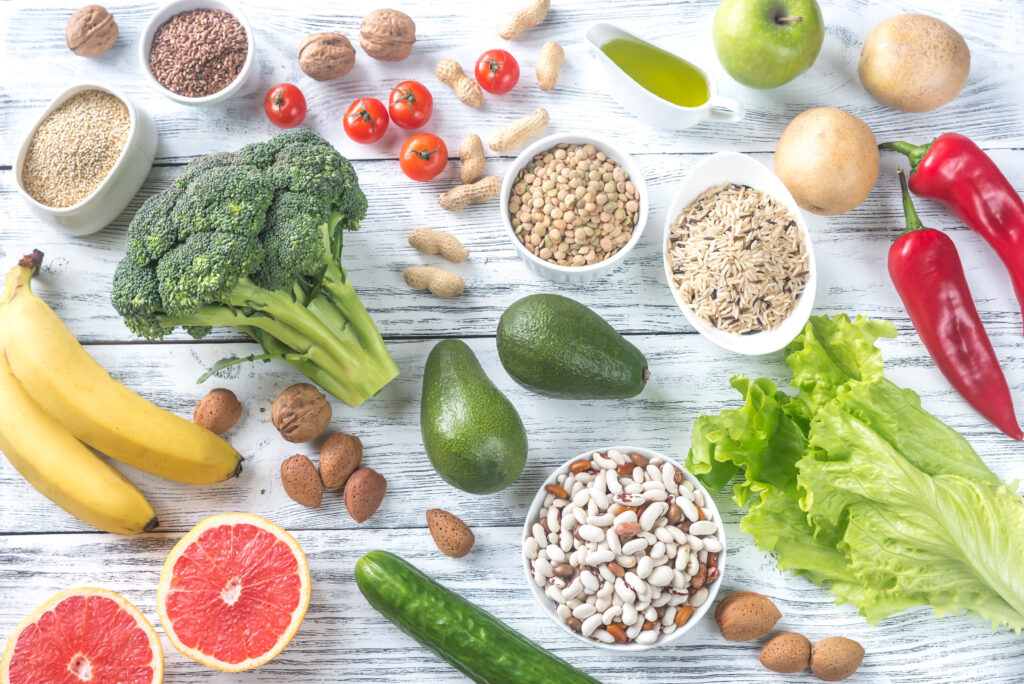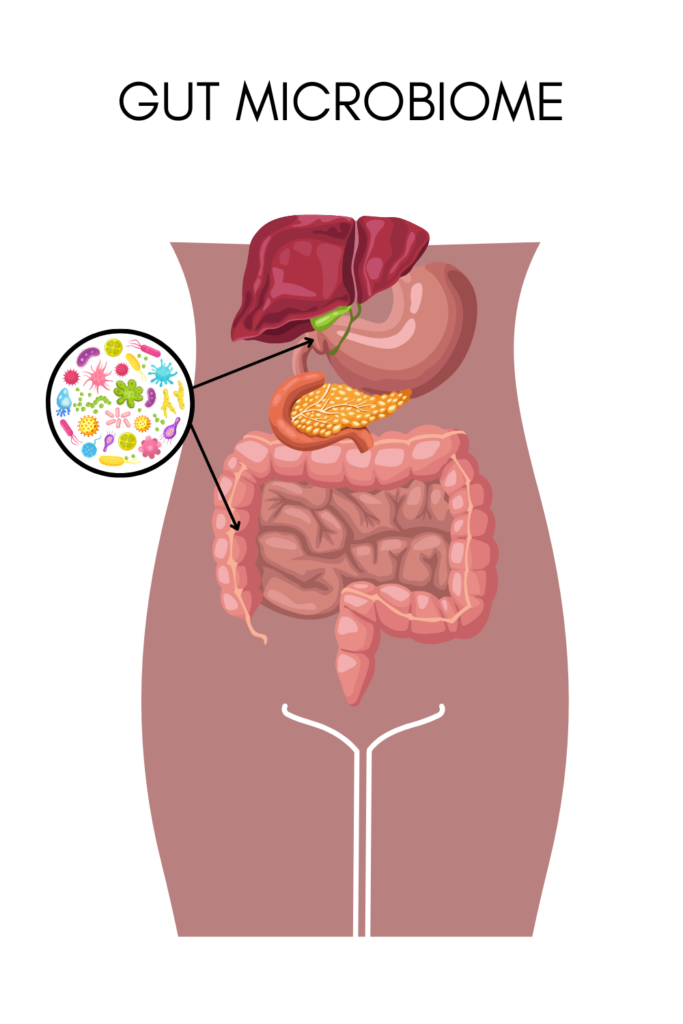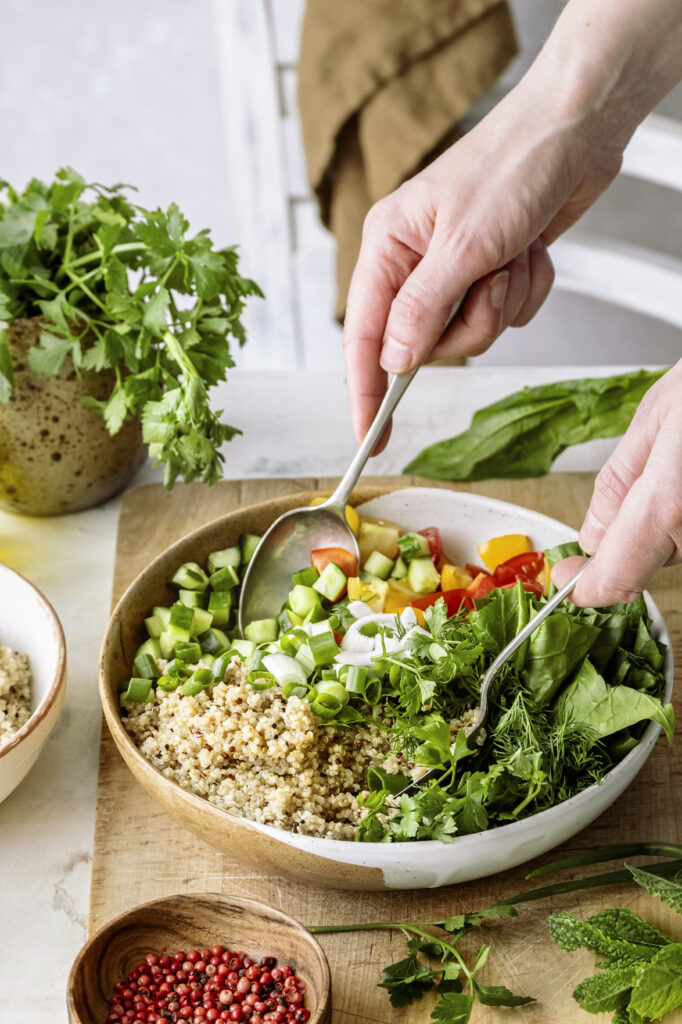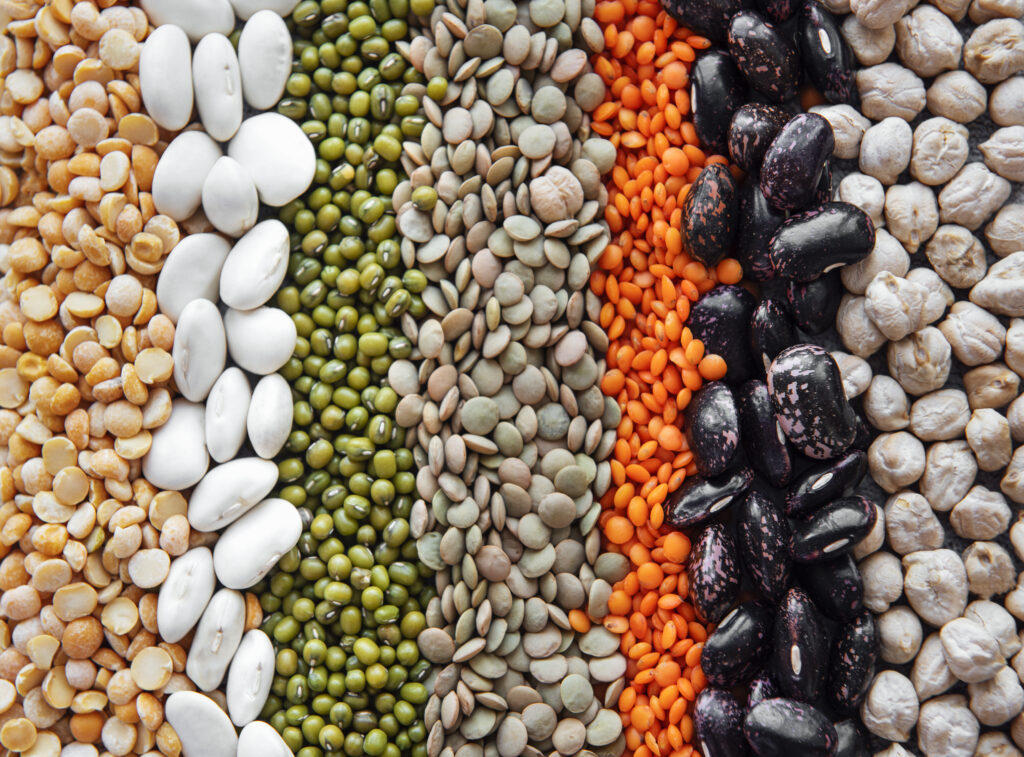–Written by Marusa Zamorano, MD, General Surgeon Specialised in Abdominal Surgeries, endoscopies and proctology–
Are you tired of hearing about the latest diet trends and health advices that promise to transform your life? Well, get ready for a refreshing change. We’re not here to talk about some new diet revelation. Instead, we’re going to explain the science-backed benefits of incorporating 30 different plants into your weekly meals. Yes, you read that right – 30 plants! But before you dismiss this as another wild challenge, let us assure you that it’s not as heavy as it seems.

You may be wondering why eating 30 plants a week is receiving so much attention. The answer lies in the numerous benefits it offers for your gut microbiome and overall health. The gut microbiome, often referred to as your body’s second brain, plays a crucial role in various bodily functions and impacts your overall well-being. By consuming a diverse range of plant foods, you can boost the diversity of your gut microbiome and set the stage for a healthier you.

Here comes the excitement 🙂
You might be thinking that it’s all about fruits and veggies, but here’s the exciting part – it’s not just limited to them. Grains, nuts, seeds, herbs, and spices also count towards your 30-plant goal. In fact, studies have shown that consuming five portions of fruits and vegetables daily can significantly improve your long-term health.
However, experts now believe that expanding your plant repertoire is equally important. Eating patterns rich in plant foods, such as the Mediterranean diet, have been linked to a reduced risk of chronic conditions like heart disease, type 2 diabetes, and even cancer. These plant-centric diets may also promote healthy aging, allowing you to enjoy a longer life.

Consuming a variety of plants is particularly crucial for the health of your gut microbiome. Plants contain prebiotics, which act as fuel for the “good” bacteria in your gut. These prebiotics include different types of fiber, carbohydrates, and polyphenols, which are responsible for the vibrant colors of many plants and possess antioxidant and anti-inflammatory properties.
Each plant contains a unique combination of prebiotics, nourishing different strains of gut bugs. Therefore, consuming a wide range of plants supports the diversity of your gut microbiome. And here’s the exciting part – a more diverse microbiome with a higher population of beneficial bugs leads to a better-functioning and more resilient gut.

And where the number “30” comes from?
Let us take you back to the American Gut Project, a groundbreaking research collaboration involving over 10,000 individuals from the United States, the United Kingdom, and Australia. Led by experts like ZOE Co-Founder Prof. Tim Spector, this study examined the eating habits and gut microbiomes of the participants.
The results were eye-opening. Participants who consumed 30 or more different plants per week had more diverse gut microbiomes and a higher presence of “good” gut bugs. These individuals also had higher levels of healthy chemicals produced by the bacteria, indicating improved gut health. This solid evidence forms the foundation for the 30-plant challenge.
But what exactly counts as a plant? Don’t worry; it’s not as complicated as it may seem and you don’t need to eat your decor indoor plants either 😀 Expanding your plant-based food options doesn’t have to be a daunting task. According to prof. Tim Spector, increasing the variety and amount of plants in your diet doesn’t have to be difficult.
In fact, you can include herbs, spices, nuts, and seeds alongside traditional fruits and vegetables.

Even small pinches of herbs and spices count towards your 30-plant goal. So, get creative with your meals and experiment with different flavors. Don’t forget to explore the rainbow of vegetables available to you. For instance, red, green, and yellow bell peppers count as three separate plants since each color offers unique polyphenols that fuel distinct strains of gut microbes, contributing to diverse health benefits.
VEGETABLES
Vegetables come in all shapes, sizes, and colors, offering a wide range of options to choose from. Consider incorporating vegetables like asparagus, broccoli, cabbage, carrots, and spinach into your meals. These colorful additions will not only make your plate more appealing but also enhance your overall health.

FRUITS
When it comes to fruits, the possibilities are way too many. Alongside traditional choices like apples, bananas, and oranges, think outside the box and explore fruits that you might typically associate with savory dishes. How about adding avocados, bell peppers, or tomatoes to your fruit repertoire? These versatile options can provide a delightful twist to your culinary skills.

LEGUMES
Don’t forget about legumes, the uncelebrated heroes of the plant world. Black beans, chickpeas, lentils, and soybeans are not only rich in fiber, protein, and minerals but also incredibly versatile. Add them to salads, stews, or even transform them into delicious dips. These legumes will help you reach your 30-plant target while nourishing your body with essential nutrients.

GRAINS
Grains are another category of plants that deserve a place on your plate. Go for whole grains like brown rice, quinoa, and oats, as they offer more nutrients and have a positive impact on your blood sugar and fat levels. You can also experiment with different types of flour, such as rye or whole wheat, to diversify your grain intake.

NUTS & SEEDS
Nuts and seeds are not just delicious snacks; they also pack a nutritional punch. Almonds, cashews, chia seeds, flaxseeds, and sunflower seeds are great options to consider. They provide protein, fiber, healthy fats, and an array of vitamins and minerals. So, sprinkle them on your meals or enjoy them as a satisfying snack.

HERBS & SPICES
Herbs and spices are the secret ingredients that can elevate the flavor of your dishes while contributing to your 30-plant goal. Basil, cilantro, mint, and oregano are just a few examples of herbs that can add freshness and aroma to your culinary creations or masterful drinks. Meanwhile, spices like black pepper, ginger, and turmeric bring a zing of excitement to your taste buds. Don’t be afraid to experiment with different combinations and discover your favorite flavor profiles.

OTHER FOODS
You may be surprised to learn that some unexpected foods count towards your 30-plant target. Yes, we’re talking about coffee, dark chocolate, and even popcorn!
Coffee beans, which are the seeds of the coffee berry, contain fiber and polyphenols that make it into your favorite cup of Espresso.


Dark chocolate, derived from tropical fruit seeds, is rich in polyphenols and can have numerous health benefits when consumed in its purest form.

Join us on the 30-plant food based diet challenge. Stock your kitchen with a diverse array of plant-based options, supercharge your salads, and experiment with different flavors and combinations.
Start incorporating more plants into your meals today and experience the incredible health benefits of a diverse and vibrant plant-based diet.
Comments +